Pediatric Heterotaxy Program
Pediatric Heterotaxy Program
Pediatric Heterotaxy Program
Heterotaxy syndrome is a genetic condition that affects how a child’s organs develop. Some children have minor problems as a result. Others need multiple surgeries and lifelong care.
Children's Health℠ is proud to be one of only two centers in the country with a multidisciplinary program dedicated to children with heterotaxy syndrome.. We have experience in providing the best care for your child’s health while managing this condition. That experience includes newborns who need surgery right away to survive.
Our expert team uses advanced tests and treatments to help your child grow as strong and healthy as possible. We also do research that helps other doctors identify and treat different aspects of the syndrome.
Our Programs
- Biliary Atresia Program
- Pediatric Complex Biventricular Repair Program
- Pediatric Cardiac Therapy Program
- Cardiac Neurodevelopmental Program
- Cardiothoracic Surgery
- Pediatric Electrophysiology Program
- Pediatric Fontan Program
- Pediatric Advanced Cardiac Care (PACC) Program
- Pediatric Gastroenterology (GI)
- Pediatric Liver (Hepatology) Disease Center
- Pediatric Pulmonary Medicine
- Pulmonary Hypertension (PH) Program
- Safe at Home Program
Conditions We Treat
- Atrial isomerism
- Atrioventricular septal defects (AVSD)
- Double outlet right ventricle
- Congenital heart disease
- Heart block
- Pediatric arrhythmias
- Single ventricle defects
- Sinus node dysfunction
- Biliary Atresia Splenic Malformation (BASM) syndrome
- Total anomalous pulmonary venous return (TAPVR)
- Transposition of the great arteries
- Asplenia
- Polysplenia
- Pediatric biliary atresia
- Heterotaxy syndrome
- Pediatric intestinal malrotation and volvulus
- Primary ciliary dyskinesia (PCD)
- Situs inversus totalis
Treatments and Services
- Complex biventricular repair
- Feeding therapy after heart surgery
- Genetic testing and genetic counseling
- Heart transplant
- Kawashima surgery (for single ventricle patients with a type of heterotaxy called left isomerism)
- Electron microscopy analysis of ciliary structure
- Indocyanine Green test (for biliary atresia)
- LADD procedure (for intestinal malrotation)
- Pediatric liver transplant
- MMP-7 test (for biliary atresia)
- Nasal nitric oxide testing (for PCD)
- Splenic and immune function testing
- Upper digestive tract exam using fluoroscopy
Cutting-edge care at one of only two heterotaxy programs in the nation
At Children’s Health, your child receives care from some of the country’s most experienced and innovative heterotaxy experts. We use advanced tests that almost no one else offers.
For example, our team developed two tests for biliary atresia that are much faster and less invasive than the standard method. We also offer rare tests for primary ciliary dyskinesia (PCD), a lung condition that can lead to frequent infections. PCD is common for children with heterotaxy syndrome, but many aren’t diagnosed until they come to us.
A multidisciplinary approach to help kids thrive
Children with heterotaxy syndrome need care from a wide range of specialists — from heart and lung experts to experts in gastroenterology and other areas. Our program provides a central hub for these specialists to coordinate their decisions and make the best plan for your child.
For parents, this hub helps you manage the many tests, scans and treatments your child may need. We’re your single point of contact, connecting you with local and national experts your child needs.
Our commitment to ongoing heterotaxy research
Our team leads research to better understand heterotaxy syndrome and improve treatment. Some projects explore which genes cause the syndrome and lead to certain symptoms. These projects will help doctors identify a child’s individual needs and recommend the best treatments for them. Other research helps medical teams test for lung and spleen problems that are common with heterotaxy.
Cutting-edge care at one of only two heterotaxy programs in the nation
At Children’s Health, your child receives care from some of the country’s most experienced and innovative heterotaxy experts. We use advanced tests that almost no one else offers.
For example, our team developed two tests for biliary atresia that are much faster and less invasive than the standard method. We also offer rare tests for primary ciliary dyskinesia (PCD), a lung condition that can lead to frequent infections. PCD is common for children with heterotaxy syndrome, but many aren’t diagnosed until they come to us.
A multidisciplinary approach to help kids thrive
Children with heterotaxy syndrome need care from a wide range of specialists — from heart and lung experts to experts in gastroenterology and other areas. Our program provides a central hub for these specialists to coordinate their decisions and make the best plan for your child.
For parents, this hub helps you manage the many tests, scans and treatments your child may need. We’re your single point of contact, connecting you with local and national experts your child needs.
Our commitment to ongoing heterotaxy research
Our team leads research to better understand heterotaxy syndrome and improve treatment. Some projects explore which genes cause the syndrome and lead to certain symptoms. These projects will help doctors identify a child’s individual needs and recommend the best treatments for them. Other research helps medical teams test for lung and spleen problems that are common with heterotaxy.
Pediatric Heterotaxy Program
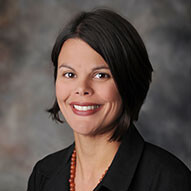 Yadira Rivera-Sanchez, MDPediatric Pulmonologist
Yadira Rivera-Sanchez, MDPediatric Pulmonologist Stephen Spurgin, MDPediatric Cardiologist
Stephen Spurgin, MDPediatric Cardiologist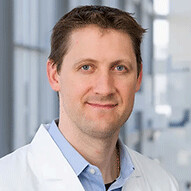 Nicholas Andersen, MDPediatric Cardiothoracic Surgeon
Nicholas Andersen, MDPediatric Cardiothoracic Surgeon Corinne Anton, PhD, ABPPPediatric Psychologist - Cardiology
Corinne Anton, PhD, ABPPPediatric Psychologist - Cardiology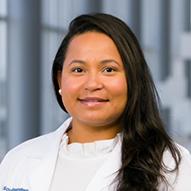 Natasha Corbitt, MDPediatric Surgeon
Natasha Corbitt, MDPediatric Surgeon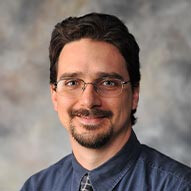 Garrett Gotway, MDPediatric Genetics Specialist
Garrett Gotway, MDPediatric Genetics Specialist Hoang Nguyen, MDPediatric Electrophysiologist
Hoang Nguyen, MDPediatric Electrophysiologist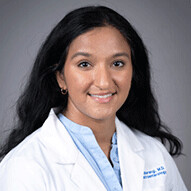 Sindhu Pandurangi, MDPediatric Hepatologist
Sindhu Pandurangi, MDPediatric Hepatologist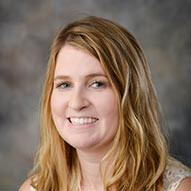 Sheradon Waits, APRN, PNP-AC/PCNurse Practitioner - Cardiology
Sheradon Waits, APRN, PNP-AC/PCNurse Practitioner - Cardiology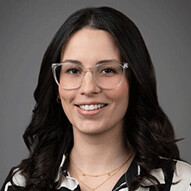 Hannie Zomer Bolanos, MDPediatric Immunology
Hannie Zomer Bolanos, MDPediatric Immunology